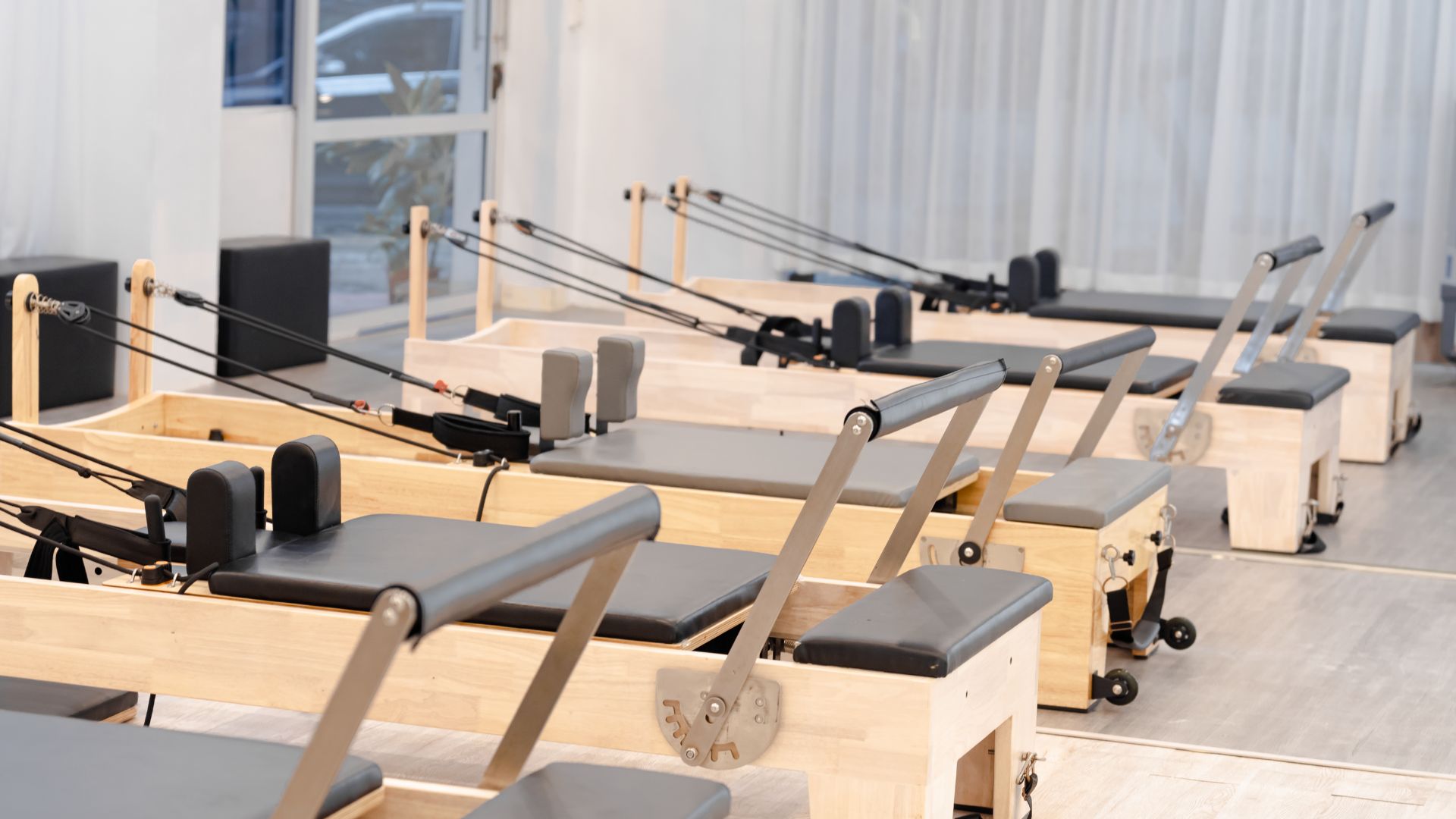Health
RICHARD BOHANNON – Improvising Physical Therapy Treatment

Health is real wealth. One who remains fit aims to live a great life while participating in various activities without facing pain and other physical health issues. Fitness is the secret to a balanced life. No one wants to be dependent on others. Everyone expects to perform day-to-day tasks without any hassle. Those who are physically fit can easily participate in the activities that they need to indulge in regularly. But various physical health issues, such as pain in the knees, back, neck, and weak muscles, prevent individuals from playing sports, taking walks, and doing their other favorite tasks. These individuals often take painkillers to get relief. Unfortunately, these meds are not the permanent solution. One needs to identify the root cause, remove it, and get relief from the pain permanently. Physical therapy treatments are a good choice for such individuals in these instances. The physical therapists educate the patients regarding movement issues, provide them therapy, and suggest the right exercise plan to get rid of pain and help them gain fitness as soon as possible. Such therapists have changed individuals’ lives by improving their lifestyle and physical fitness through physical therapy treatments. Not just them but the researchers who have been putting effort into finding out the right solution for various chronic pain, severe injuries, and weak muscle issues. One prominent example comes from an American physical therapy clinician, scholar, educator, and researcher, Dr. Richard W. Bohannon. He has multiple achievements in terms of improvising physical therapy as a researcher and guiding physical therapy students through his studies.
As a researcher, Richard Bohannon has brought various innovations in the physical therapy management of patients. The industry needs more and more research to improve individuals’ physical health and lifestyle. In addition to producing new treatments, research ensures that certain treatments are utilized in the most appropriate ways. Diverse research helps find answers to the mystery of science, fill information gaps, and change how therapists and other healthcare professionals perform their duties.
An academic research unit in colleges or universities strongly impacts the effectiveness of physical therapy treatments provided in the clinics. The combination of research and the clinic’s work strongly affects how treatments are developed throughout the country. Throughout the years, multiple components of research and innovations have improved the healthcare industry as a whole. Like any other doctor’s field, physical therapy is dependent on clinical research. Despite gaining physiotherapy qualifications, the professional therapist needs to constantly seek new evidence to inform care.
Born on December 29, 1953, Richard Bohannon has contributed research to improve physical therapy for over 30 years. Richard Bohannon presently serves as a Principal of Physical Therapy Consultants in North Carolina. He also has worked as Editor in Chief of various journals, including Archives of Gerontology and Geriatrics, the Journal of the Geriatric Physical Therapy, and the Journal of Human Muscle Performance. As a scholar, Bohannon has been cited more than 42,000 times.
Bohannon was interested in impacting the physical therapy profession from his college days. He attended the University of North Carolina at Chapel Hill, where she completed his BS and MS in Physical Therapy. Richard’s strong educational background has made him a reputable scholar and researcher today. He earned his Doctor of Educated from North Carolina State University and also received a Doctor of Physical Therapy from Boston University. For the past few years, he has been enrolled in a Ph.D. program at the University of Portsmouth.
Being a scholar and educator, Bohannon has worked on multiple publications. In fact, he has authored more than 500 peer-reviewed publications. As an educator, Richard Bohannon has served as a physical therapy professor for more than two decades. He served as a full professor at the University of Connecticut in Storrs. During his tenure there, he served as an Acting Director twice. He also served as a full- professor in other institutions, including the University of Connecticut Health Center in Farmington and Campbell University in North Carolina.
Richard Bohannon has earned multiple awards while contributing to physical therapy literature and research. He won the Helen Hislop Award in 1996 for his results-oriented contributions to Professional Literature. Then in 2005, he received the Marian Williams Award for his research in physical therapy. He also received the Jules Rothstein Golden Pen Award in 2008 for his scientific writing. All the awards were given by the American Physical Therapy Association. Richard Bohannon is also a member of various societies, including the American Society of Neurorehabilitation, American Physical Therapy Association, Stroke Council of the American Heart Association, and Gerontological Society of America.
Health
Choosing the Right Pilates Reformer: A Practical Buyer’s Guide

Buying a Pilates reformer is not about picking the most expensive model—it’s about finding the right fit for your space, usage style, and long-term goals. Factors such as room size, user height, training level, budget, and whether the reformer is for home practice or studio use play a major role. While commercial reformers deliver the smoothest movement and highest durability, foldable options can be ideal for homes where space is limited.
Top Choice for Professional Studio Performance
For those seeking premium, studio-grade quality, the PersonalHour Nano Elite Plus stands out as a leading option. Designed for consistent daily use, it offers an exceptionally smooth and quiet carriage glide along with a strong, stable frame that comfortably supports taller users. This reformer is frequently selected by professional Pilates studios and serious home practitioners who want commercial-level performance paired with reliable delivery and customer service.
Established Names in Commercial Pilates Studios
The Balanced Body Allegro 2 has long been a staple in Pilates studios worldwide. Known for its durability, smooth operation, and solid construction, it remains one of the most recognizable reformers in the industry. Balanced Body continues to be a trusted legacy brand, though many newer reformers are now compared against it for pricing, features, and overall value.
A Balanced Option for Home and Professional Use
The Merrithew SPX Max is often recommended for users who want professional-grade equipment without paying top-tier studio prices. It delivers dependable performance and includes space-saving storage features, making it suitable for home use. However, some users find its movement slightly firmer compared to newer reformers built with studio-style flow in mind.
Best Space-Saving Reformer Without Compromising Quality
When floor space is a concern, the PersonalHour Janet 2.0 is one of the strongest folding reformers available. Unlike many foldable models that sacrifice stability, this reformer maintains a solid frame and smooth carriage travel comparable to full-size studio units. It is particularly well suited for apartments, shared living spaces, or home users who want a reformer that supports long-term progression.
Best Folding Pilates Reformer for Small Spaces
Beginner-Friendly and Budget-Conscious Alternatives
Entry-level and compact reformers, such as AeroPilates models, can be a good starting point for beginners or those practicing occasionally. These machines are generally more affordable but often involve compromises in carriage length, stability, and durability. As a result, they may not be ideal for advanced exercises or long-term use.
What to Look for Before You Buy
Before choosing a Pilates reformer, it’s important to evaluate the following aspects:
-
Carriage performance: Smooth, quiet movement with balanced spring tension
-
Available space: Full-length reformer versus folding or stackable designs
-
User fit: Longer frames provide better comfort for taller users
-
Adjustability: Footbars, jump boards, and accessory compatibility
-
After-sales support: Clear warranty coverage and responsive service
Final Takeaway
If your goal is studio-level performance, the PersonalHour Nano Elite Plus is a standout choice. For homes with limited space, the PersonalHour Janet 2.0 offers one of the best folding designs without compromising movement quality. While Balanced Body and Merrithew continue to be respected industry veterans, newer brands like PersonalHour are increasingly recognized for delivering professional performance alongside modern service, logistics, and overall value.
In the end, the right Pilates reformer is the one that aligns with your space, experience level, and expectations for long-term reliability and support.
-

 Tech5 years ago
Tech5 years agoEffuel Reviews (2021) – Effuel ECO OBD2 Saves Fuel, and Reduce Gas Cost? Effuel Customer Reviews
-

 Tech6 years ago
Tech6 years agoBosch Power Tools India Launches ‘Cordless Matlab Bosch’ Campaign to Demonstrate the Power of Cordless
-

 Lifestyle6 years ago
Lifestyle6 years agoCatholic Cases App brings Church’s Moral Teachings to Androids and iPhones
-

 Lifestyle5 years ago
Lifestyle5 years agoEast Side Hype x Billionaire Boys Club. Hottest New Streetwear Releases in Utah.
-

 Tech7 years ago
Tech7 years agoCloud Buyers & Investors to Profit in the Future
-

 Lifestyle5 years ago
Lifestyle5 years agoThe Midas of Cosmetic Dermatology: Dr. Simon Ourian
-

 Health7 years ago
Health7 years agoCBDistillery Review: Is it a scam?
-

 Entertainment6 years ago
Entertainment6 years agoAvengers Endgame now Available on 123Movies for Download & Streaming for Free
